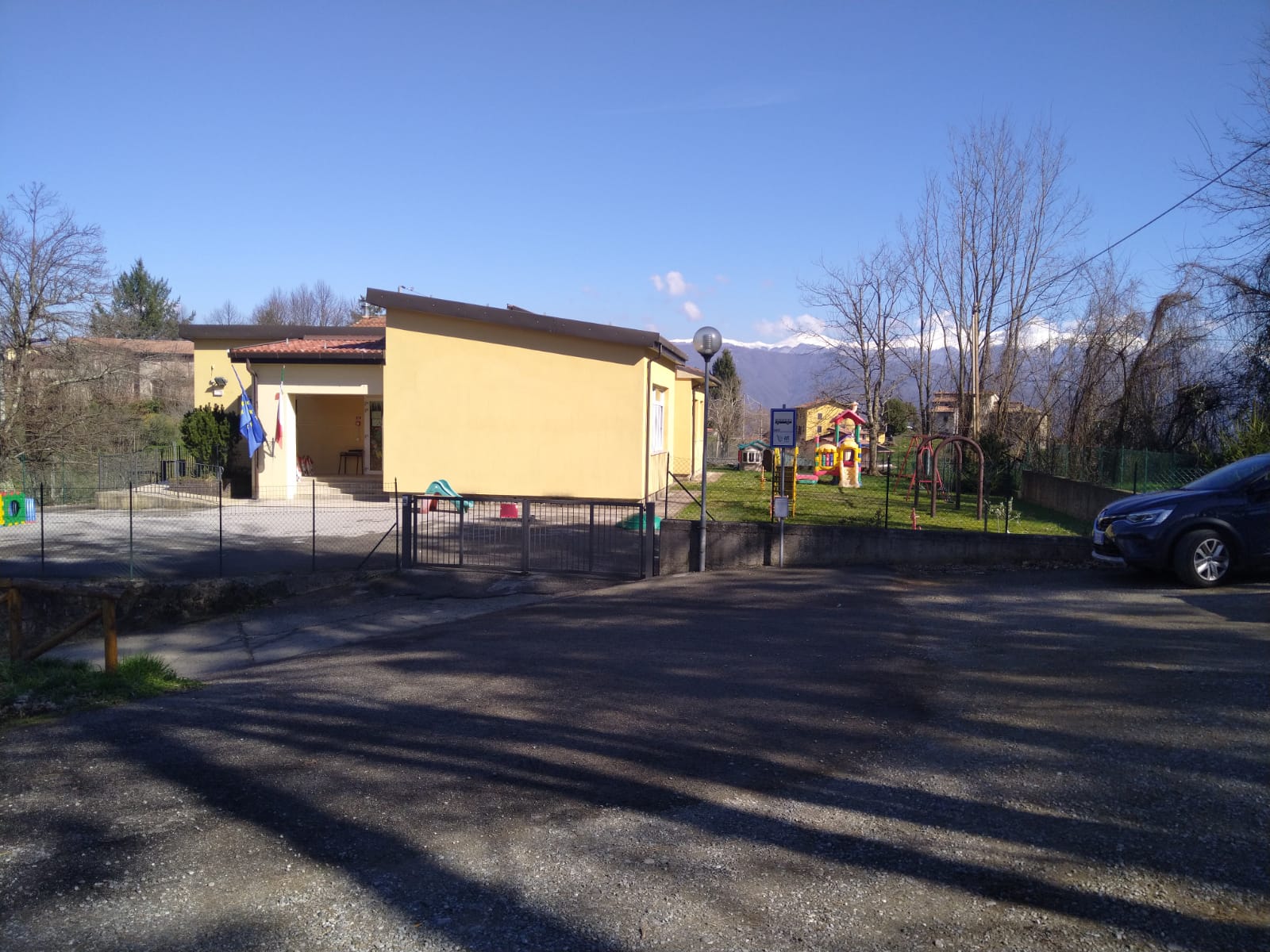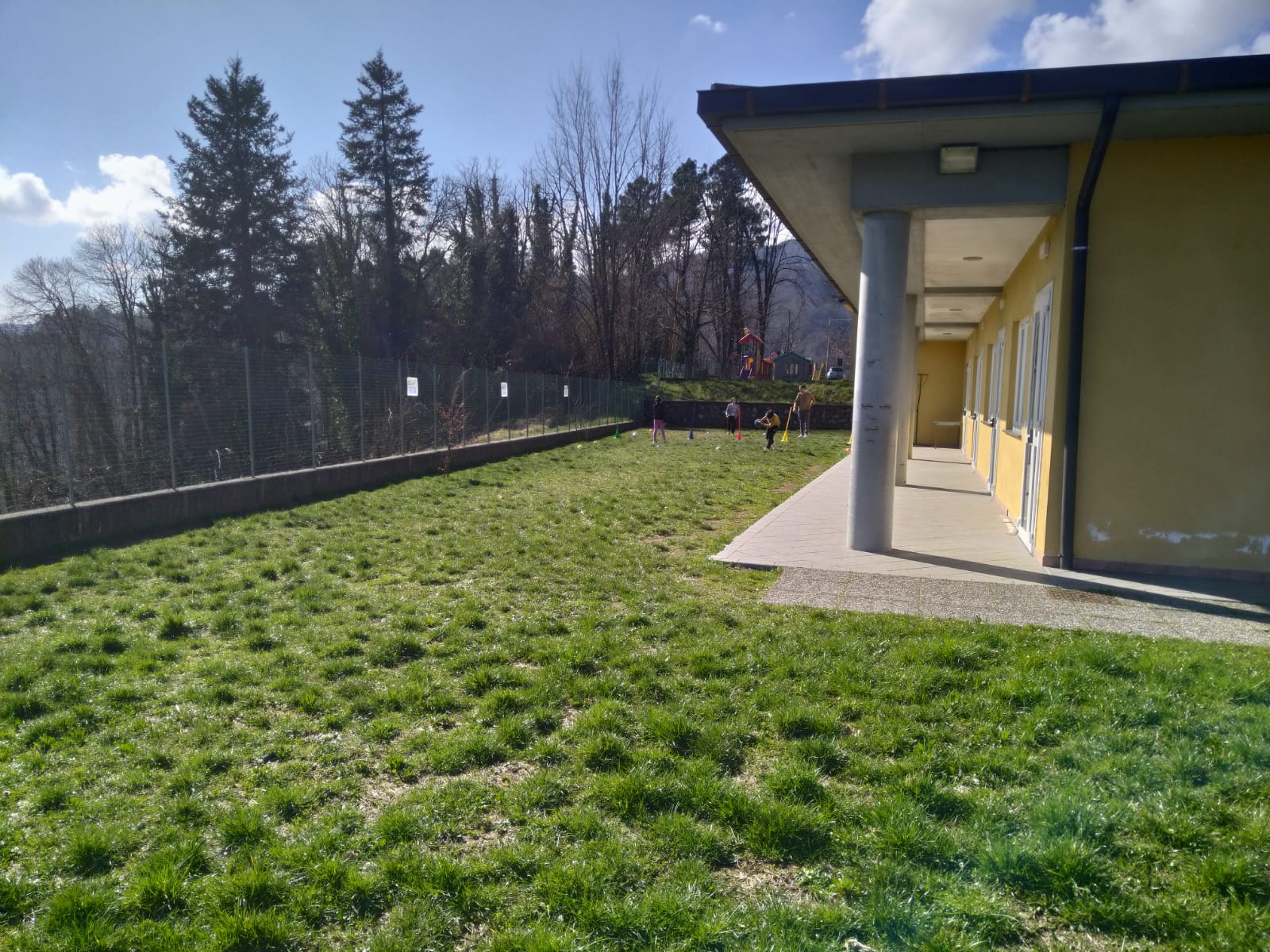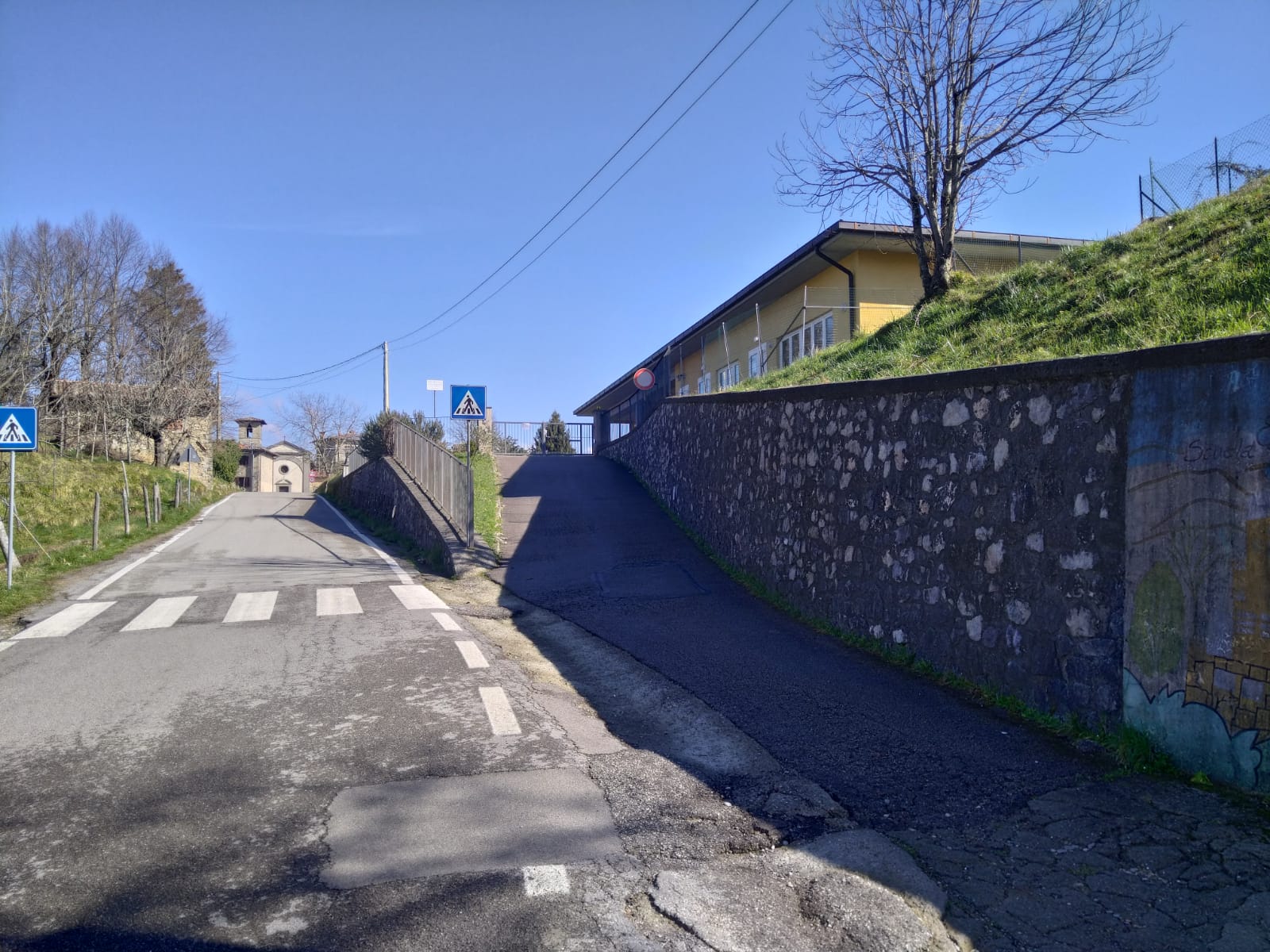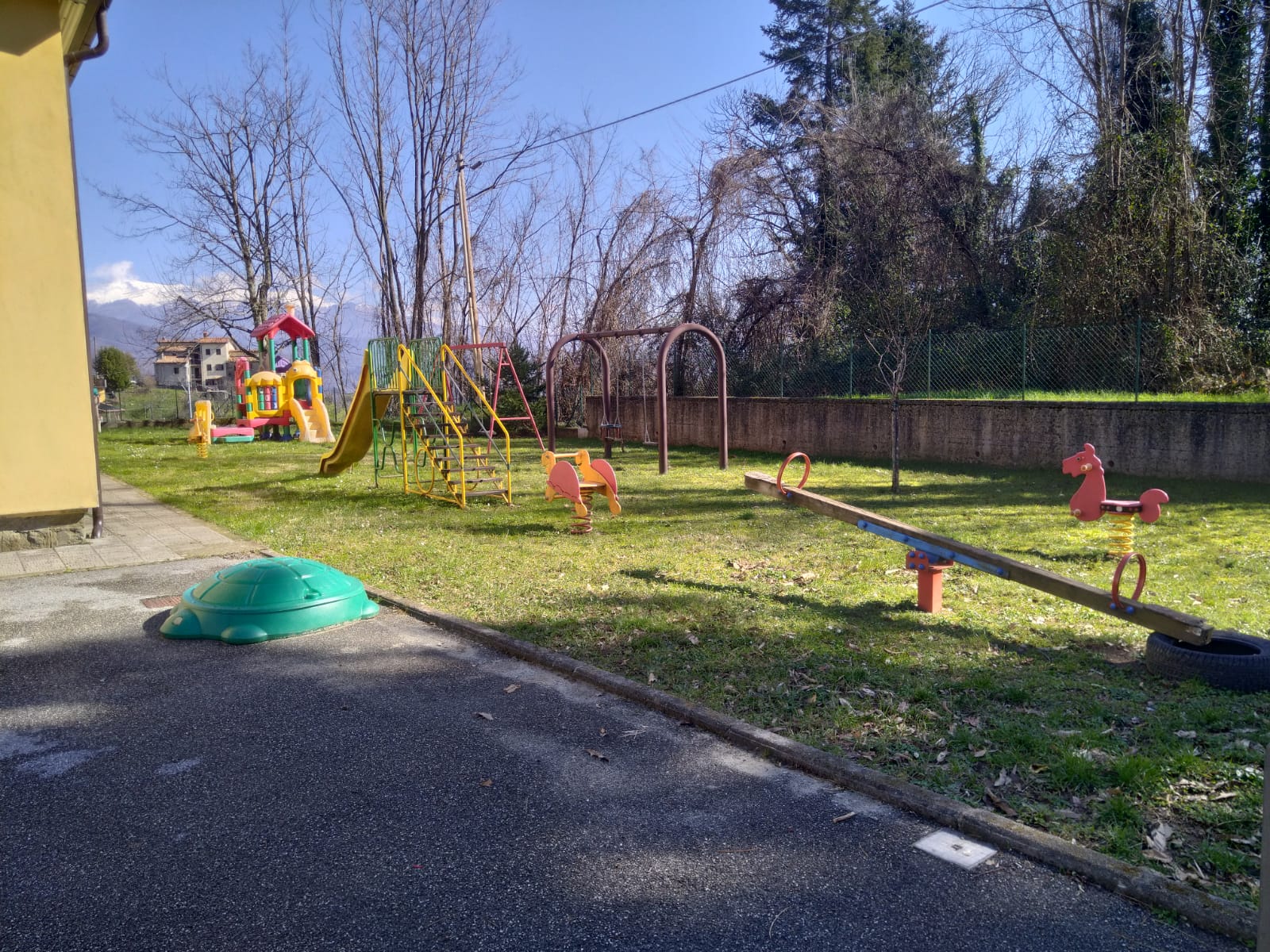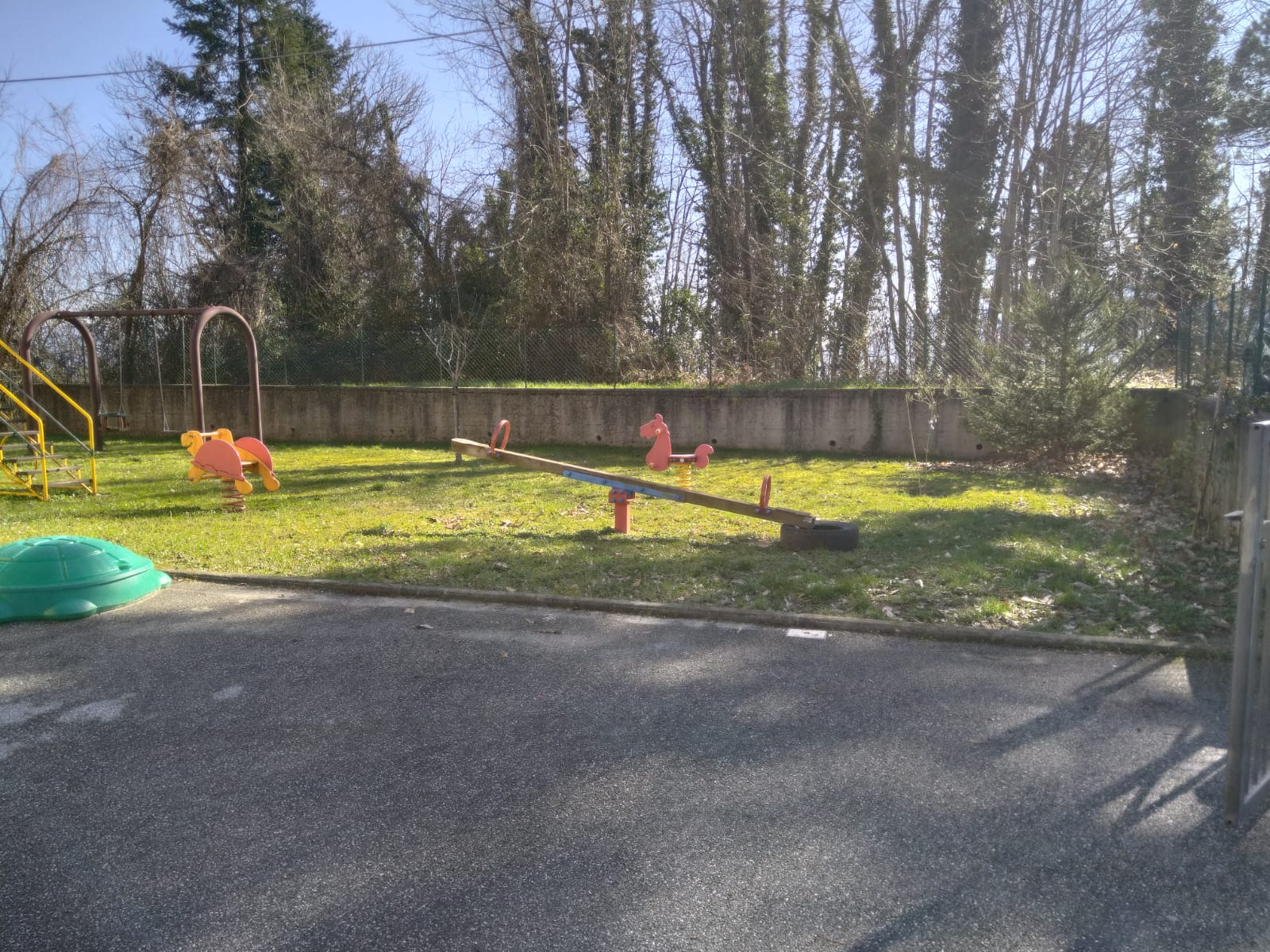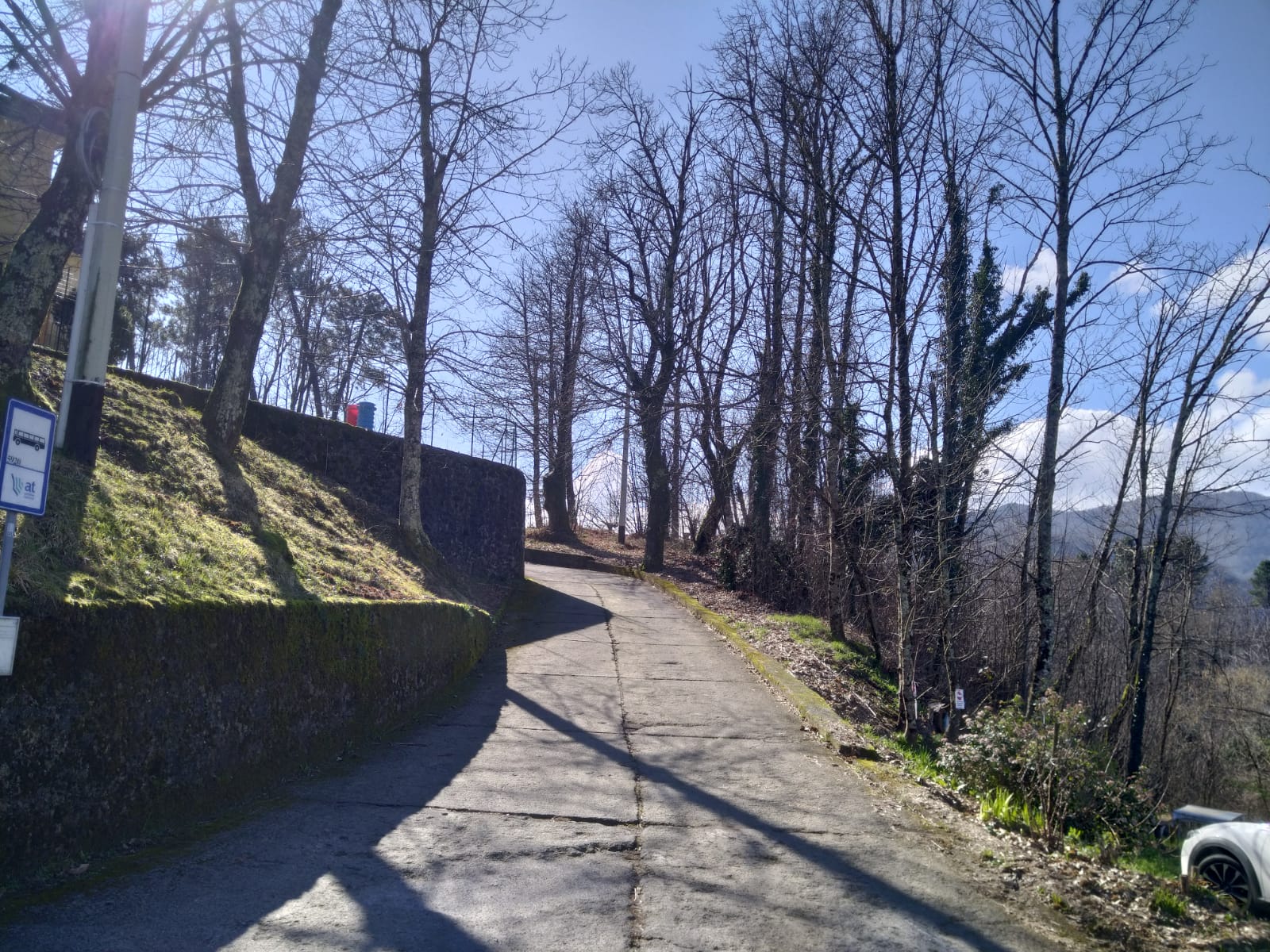Small Municipalities foward into future
I piccoli comuni guardano
The attention of the municipal administration has always been directed towards sustainable development understood as that type of development that "satisfies the needs of current generations without compromising the ability of future generations to satisfy their own". A growth therefore based on saving, on the protection of resources and on avoiding excesses, which translates into small measures or radical changes in the activities that can be achieved: the adoption of renewable energy sources.
Italy
Molazzana
Early initiative
Yes
Yes
Yes
No
No
046020: Molazzana (IT)
A growth based on saving, on the protection of resources and on avoiding excesses, which translates into small measures or radical changes in the activities that can be achieved: the adoption of renewable energy sources, the recycling and reuse of products and processes of the circular economy. Attention to the environment, however, is not the only pillar on which sustainable development rests. It is better to focus on social sustainability, that is the ability for a society to ensure well-being conditions equitably distributed, in order to achieve equality and eliminate discrimination. All this through 3 parameters: beauty so that art and culture can (re)activate the qualities of a given context contributing to our physical and mental wellness; Connect different places and people and promote a sense of belonging through meaningful collective experiences; and integrate new lasting cultural and social values through creation. Sustainability means prioritising the needs of all forms of life and the planet by ensuring that human activity does not exceed planetary limits. Finally, inclusion is enriched with the concepts of equality and accessibility by encouraging exchanges between cultures, genders and ages. In particular, the project includes a playful and a more educational side. The first one involves the use of games made with environmentally friendly materials that, once decommissioned, can come back to new life and be reused in other building works. In addition to instilling ecological values in children through play and daily activities, they can learn how to reduce waste and protect nature by making these activities part of their routine. The second part more focused on sustainability involves the use of systems to be applied to the taps to reduce the flow of water and the creation of small vegetable gardens and/or social gardens. In this way the children will learn to know what nature produces while resources of our planet and to work as a group.
social sustainability
beauty
inclusion
accessibility
exchanges between cultures
Activation of a territorial network participating in the design, construction and maintenance phase of the vegetable garden/garden, through the involvement of parents of local associations and anyone who wants to join in. At the same time, eco-sustainable games will be included and eco-sustainability measures will be taken.
Vegetable garden/garden cultivation: the classes involved will take care of soil tillage, fertilizing, sowing, irrigation, thinning, harvesting; the choice of cultivation, sowing or transplanting.
Vegetable garden/garden cultivation: the classes involved will take care of soil tillage, fertilizing, sowing, irrigation, thinning, harvesting; the choice of cultivation, sowing or transplanting.
Create activities through which children are encouraged to use their senses to connect with nature and develop or improve different skills such as exploration, observation and manipulation.
• Raising children’s awareness of the care and protection of the environment in which they live. Strengthen the sense of belonging to the territory of the school, so that children live it in a more respectful and responsible way at all times.
• Systematic observation of a natural habitat: the soil
Understanding the concept of "ecosystem" and the need to preserve its balance
• Raising children’s awareness of the care and protection of the environment in which they live. Strengthen the sense of belonging to the territory of the school, so that children live it in a more respectful and responsible way at all times.
• Systematic observation of a natural habitat: the soil
Understanding the concept of "ecosystem" and the need to preserve its balance
Promote "practical" work as a tool for building processes of socialization, integration and exchange
This project will continue and be maintained with the classes and future generations and will be enriched by both former students and older generations as witnesses of historical memory.
This project will continue and be maintained with the classes and future generations and will be enriched by both former students and older generations as witnesses of historical memory.
Citizens and civil society play a crucial role in the success and sustainability of any initiative. Their involvement is not just about benefiting from the outcomes but also about contributing to the planning, implementation, and evaluation processes, which creates a sense of ownership and responsibility.
The initiative in question actively engages citizens in various stages. Initially, there is a consultative phase where public consultations, surveys, and meetings are organized to gather input from local communities. This ensures that the project aligns with the needs and expectations of the people it aims to serve. During this phase, the impact on citizens is mainly about giving them a platform to voice their concerns, suggestions, and ideas, allowing them to shape the direction of the initiative.As the initiative progresses, citizens are invited to participate in workshops and collaborative decision-making sessions. This not only allows for more direct involvement but also builds trust between stakeholders. By including civil society organizations, the initiative gains diverse perspectives, especially those representing marginalized or underrepresented groups. Their involvement ensures that the initiative is inclusive and equitable, addressing the needs of all sectors of society.
The impact of this involvement on the initiative is profound. First, it leads to a more targeted and effective implementation, as citizens and civil society groups are more likely to support a project they helped shape. Moreover, the initiative benefits from local knowledge and grassroots insights, which can improve the relevance and efficiency of actions taken. This collaborative approach also fosters social cohesion, strengthens community bonds, and promotes collective responsibility, ensuring long-term sustainability.
Additionally, involving citizens and civil society in the monitoring and evaluation phases helps in holding the initiative accountable, identifying areas for improv
The initiative in question actively engages citizens in various stages. Initially, there is a consultative phase where public consultations, surveys, and meetings are organized to gather input from local communities. This ensures that the project aligns with the needs and expectations of the people it aims to serve. During this phase, the impact on citizens is mainly about giving them a platform to voice their concerns, suggestions, and ideas, allowing them to shape the direction of the initiative.As the initiative progresses, citizens are invited to participate in workshops and collaborative decision-making sessions. This not only allows for more direct involvement but also builds trust between stakeholders. By including civil society organizations, the initiative gains diverse perspectives, especially those representing marginalized or underrepresented groups. Their involvement ensures that the initiative is inclusive and equitable, addressing the needs of all sectors of society.
The impact of this involvement on the initiative is profound. First, it leads to a more targeted and effective implementation, as citizens and civil society groups are more likely to support a project they helped shape. Moreover, the initiative benefits from local knowledge and grassroots insights, which can improve the relevance and efficiency of actions taken. This collaborative approach also fosters social cohesion, strengthens community bonds, and promotes collective responsibility, ensuring long-term sustainability.
Additionally, involving citizens and civil society in the monitoring and evaluation phases helps in holding the initiative accountable, identifying areas for improv
The involvement of stakeholders at local, regional, national, and European levels is essential for the success of any initiative, as each level provides unique perspectives and resources.
At the local level, citizens, local authorities, and community organizations play a central role. During the design phase, consultations and participatory workshops are conducted to gather input, ensuring the initiative meets the needs of the community. Local stakeholders are also actively engaged in implementation, offering on-the-ground feedback and ensuring that the initiative reflects the realities of the area.
At the regional level, regional governments and relevant associations contribute to the coordination and scaling of the initiative. They help align the project with regional strategies, provide policy frameworks, and support through funding and logistical coordination. This level ensures the initiative is coherent with other regional efforts and helps expand its impact beyond individual localities.At the national level, national governments and ministries set the legislative and policy frameworks that guide the initiative. They ensure alignment with national priorities, regulations, and funding opportunities. National stakeholders offer resources and expertise to scale the initiative and help coordinate between local and European levels, ensuring smooth communication and integration across all governance layers. At the European level, the European Union and related institutions provide vital support through funding programs, policy guidance, and strategic frameworks. They ensure the initiative aligns with broader EU objectives, such as sustainable development and social inclusion, and offer access to networks and additional resources. Their involvement ensures the initiative contributes to EU strategies and benefits from EU-wide policies. In summary, engaging stakeholders at all levels—local, regional, national, and European—creates a coordinated and effective appr
At the local level, citizens, local authorities, and community organizations play a central role. During the design phase, consultations and participatory workshops are conducted to gather input, ensuring the initiative meets the needs of the community. Local stakeholders are also actively engaged in implementation, offering on-the-ground feedback and ensuring that the initiative reflects the realities of the area.
At the regional level, regional governments and relevant associations contribute to the coordination and scaling of the initiative. They help align the project with regional strategies, provide policy frameworks, and support through funding and logistical coordination. This level ensures the initiative is coherent with other regional efforts and helps expand its impact beyond individual localities.At the national level, national governments and ministries set the legislative and policy frameworks that guide the initiative. They ensure alignment with national priorities, regulations, and funding opportunities. National stakeholders offer resources and expertise to scale the initiative and help coordinate between local and European levels, ensuring smooth communication and integration across all governance layers. At the European level, the European Union and related institutions provide vital support through funding programs, policy guidance, and strategic frameworks. They ensure the initiative aligns with broader EU objectives, such as sustainable development and social inclusion, and offer access to networks and additional resources. Their involvement ensures the initiative contributes to EU strategies and benefits from EU-wide policies. In summary, engaging stakeholders at all levels—local, regional, national, and European—creates a coordinated and effective appr
1) Selection and convocation of a Forum (Conference of preliminary meeting). In this phase will be invited: representatives of public institutions: Mayor; Councilors, any municipal technicians of the city institutions and stakeholders of the territory: Parents' Associations, environmental and historical associations.
2) Finding the area of the plexus, choosing an already existing area on the territory, owned by the municipality.
3) Analysis of the procedures to be carried out for the architectural/cultural aspect and for the energy saving solutions envisaged.
4) Activation of a territorial network participating in the design, construction and maintenance phase of the vegetable garden/garden, through the involvement of parents of local associations and anyone who wants to join in. At the same time, eco-sustainable games will be included and eco-sustainability measures will be taken.
5) Vegetable garden/garden cultivation: the classes involved will take care of soil tillage, fertilizing, sowing, irrigation, thinning, harvesting; the choice of cultivation, sowing or transplanting.
6) Cleaning the area to be cultivated: from leaves in autumn and winter, to herbs in spring and summer.
7) Drawing up of cards enabling children and young people to observe, describe, organize the material and information collected in order to communicate it; collection of information and observations on the plants examined or through trunk sections, branches, roots and relationships with earth, water and light.
8) Data collection and trasmission of the work done, through photographs, posters and school website.
2) Finding the area of the plexus, choosing an already existing area on the territory, owned by the municipality.
3) Analysis of the procedures to be carried out for the architectural/cultural aspect and for the energy saving solutions envisaged.
4) Activation of a territorial network participating in the design, construction and maintenance phase of the vegetable garden/garden, through the involvement of parents of local associations and anyone who wants to join in. At the same time, eco-sustainable games will be included and eco-sustainability measures will be taken.
5) Vegetable garden/garden cultivation: the classes involved will take care of soil tillage, fertilizing, sowing, irrigation, thinning, harvesting; the choice of cultivation, sowing or transplanting.
6) Cleaning the area to be cultivated: from leaves in autumn and winter, to herbs in spring and summer.
7) Drawing up of cards enabling children and young people to observe, describe, organize the material and information collected in order to communicate it; collection of information and observations on the plants examined or through trunk sections, branches, roots and relationships with earth, water and light.
8) Data collection and trasmission of the work done, through photographs, posters and school website.
The Garfagnana, a valley located in the heart of Tuscany, is a region rich in cultural and artisanal traditions that are reflected in its cuisine, art, and agricultural practices. The initiative in question stands out for its innovative character, as it seeks to preserve and enhance these local traditions while adapting them to modern needs and current challenges.
The innovative aspect of this initiative lies in the combination of traditional practices with contemporary approaches. For example, organic farming, traditionally practiced in Garfagnana, is strengthened through the adoption of innovative techniques for sustainable resource management, which helps preserve biodiversity without compromising agricultural productivity. Additionally, local culinary traditions, such as the production of chestnuts, mushrooms, and cured meats, are reinterpreted in a modern key, aiming to expand the market and promote the region nationally and internationally, with a particular focus on sustainability and product quality. Another example of innovation concerns local craftsmanship. The ancient traditions of woodworking and metalworking, which were once vital to the local economy, are being revitalized through the use of digital technologies for online promotion and the creation of virtual markets. This digitalization process allows Garfagnana artisans to reach new markets without losing their connection to traditional techniques, such as the production of handmade furniture, ceramics, and textiles. Moreover, the integration of local traditions into the tourism sector is another innovative aspect. The initiative not only promotes tourism but also offers immersive experiences that allow visitors to directly engage with Garfagnana traditions, such as participating in local festivals, chestnut harvesting, and cheese making, thus creating an authentic link between the past and the present. In summary, the innovation of the initiative lies in its ability to blend tradition and moder
The innovative aspect of this initiative lies in the combination of traditional practices with contemporary approaches. For example, organic farming, traditionally practiced in Garfagnana, is strengthened through the adoption of innovative techniques for sustainable resource management, which helps preserve biodiversity without compromising agricultural productivity. Additionally, local culinary traditions, such as the production of chestnuts, mushrooms, and cured meats, are reinterpreted in a modern key, aiming to expand the market and promote the region nationally and internationally, with a particular focus on sustainability and product quality. Another example of innovation concerns local craftsmanship. The ancient traditions of woodworking and metalworking, which were once vital to the local economy, are being revitalized through the use of digital technologies for online promotion and the creation of virtual markets. This digitalization process allows Garfagnana artisans to reach new markets without losing their connection to traditional techniques, such as the production of handmade furniture, ceramics, and textiles. Moreover, the integration of local traditions into the tourism sector is another innovative aspect. The initiative not only promotes tourism but also offers immersive experiences that allow visitors to directly engage with Garfagnana traditions, such as participating in local festivals, chestnut harvesting, and cheese making, thus creating an authentic link between the past and the present. In summary, the innovation of the initiative lies in its ability to blend tradition and moder
The methodology used in this initiative is built on a holistic, participatory approach that integrates traditional knowledge with modern innovation. It focuses on a collaborative process involving various stakeholders at local, regional, and national levels, ensuring that the community’s needs and insights are at the heart of the design and implementation phases. At the core of this approach is a sustainable development framework. For example, local agricultural practices, rooted in centuries-old traditions like organic farming, are complemented by modern techniques for sustainable land and resource management. This ensures that local biodiversity is preserved while supporting long-term agricultural productivity. Moreover, this approach emphasizes the importance of environmental stewardship, where both the land and the local economy benefit. The initiative adopts a participatory model that actively involves local communities and experts in key decision-making processes. This includes organizing workshops, surveys, and public consultations to gather input from citizens, artisans, farmers, and local businesses. By directly engaging these groups, the initiative ensures that the traditional knowledge of the Garfagnana region is preserved and enhanced through modern practices and technologies. Additionally, digital tools are incorporated into the initiative to help artisans reach global markets and showcase their craftsmanship online. The use of technology not only aids in expanding their reach but also ensures that traditional techniques are not lost, but instead, are made accessible to a broader audience. This combination of traditional and digital methods offers a unique solution that benefits both the local economy and the preservation of cultural heritage.
In the tourism sector, the methodology integrates immersive experiences that allow visitors to engage directly with Garfagnana traditions.
In the tourism sector, the methodology integrates immersive experiences that allow visitors to engage directly with Garfagnana traditions.
Several elements of this initiative can be replicated or transferred to other regions, groups of beneficiaries, and contexts, particularly those with a focus on sustainable development, cultural preservation, and community involvement. One of the key replicable aspects is the methodology of integrating traditional knowledge with modern innovation. The approach of combining local agricultural practices with contemporary sustainable farming techniques can be applied to other rural or agricultural communities. By adapting these methods to different local contexts, regions can enhance both their environmental stewardship and agricultural productivity. The emphasis on community participation through workshops, surveys, and consultations can be implemented in other areas to ensure that local knowledge and needs are reflected in the design and implementation of initiatives.The use of digital tools to support local artisans and businesses is another transferable element. The integration of technology for online promotion, sales, and global market access can be implemented in other regions with strong artisanal traditions. This would allow these communities to reach new customers and markets while preserving their cultural heritage. The process of digitally showcasing traditional craftsmanship ensures that skills passed down through generations are not only maintained but can also thrive in the modern economy. Moreover, the immersive tourism model used in this initiative, where visitors directly engage with local traditions such as chestnut harvesting or cheese-making, is also highly adaptable. This type of cultural tourism offers an authentic experience that fosters a deeper understanding of local heritage, and can be introduced in other areas seeking to enhance their tourism sector while promoting sustainability.
This initiative addresses several global challenges by providing localized solutions. One key challenge is **sustainable agriculture**, where it combines traditional farming methods with modern sustainable practices to preserve biodiversity and reduce environmental impact. By promoting organic farming and sustainable resource management, the initiative helps combat land degradation and supports long-term food security.
Another global issue is the **preservation of cultural heritage**. The initiative integrates traditional craftsmanship with digital tools, enabling artisans to reach global markets while maintaining their cultural traditions. This approach supports local economies and ensures that artisanal skills are not lost to globalization.
Finally, the initiative addresses the **need for inclusive and sustainable tourism**. By offering immersive cultural experiences, it promotes eco-friendly tourism that supports local communities and reduces the negative impact of mass tourism. This contributes to the sustainable development of regions, fostering a balance between economic growth and environmental conservation.
Another global issue is the **preservation of cultural heritage**. The initiative integrates traditional craftsmanship with digital tools, enabling artisans to reach global markets while maintaining their cultural traditions. This approach supports local economies and ensures that artisanal skills are not lost to globalization.
Finally, the initiative addresses the **need for inclusive and sustainable tourism**. By offering immersive cultural experiences, it promotes eco-friendly tourism that supports local communities and reduces the negative impact of mass tourism. This contributes to the sustainable development of regions, fostering a balance between economic growth and environmental conservation.
Create activities through which children are encouraged to use their senses to connect with nature and develop or improve different skills such as exploration, observation and manipulation.
• Raising children’s awareness of the care and protection of the environment in which they live. Strengthen the sense of belonging to the territory of the school, so that children live it in a more respectful and responsible way at all times.
• Systematic observation of a natural habitat: the soil
Understanding the concept of "ecosystem" and the need to preserve its balance.
• To disseminate a proper knowledge of the seasonality and origin of the food we eat.• Stimolare i rapporti intergenerazionali.
• Promote "practical" work as a tool for building processes of socialization, integration and exchange.
• Educate to beauty, harmony and order
• PROJECT IMPLEMENTATION This project will continue and be maintained with the classes and future generations and will be enriched by both former students and older generations as witnesses of historical memory.
• Raising children’s awareness of the care and protection of the environment in which they live. Strengthen the sense of belonging to the territory of the school, so that children live it in a more respectful and responsible way at all times.
• Systematic observation of a natural habitat: the soil
Understanding the concept of "ecosystem" and the need to preserve its balance.
• To disseminate a proper knowledge of the seasonality and origin of the food we eat.• Stimolare i rapporti intergenerazionali.
• Promote "practical" work as a tool for building processes of socialization, integration and exchange.
• Educate to beauty, harmony and order
• PROJECT IMPLEMENTATION This project will continue and be maintained with the classes and future generations and will be enriched by both former students and older generations as witnesses of historical memory.

